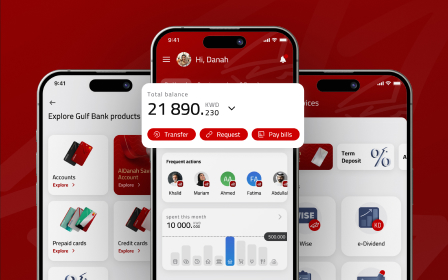How to Leverage Business Analysis in the Product Design process

Business analysis may be defined as one enabling organizations to drive changes and deliver value to stakeholders. In this context, Business analysis is an integral part of the product design process. That is why at Qubstudio, we keep pushing forward the limits of standard practice in business analysis. With the mindset of continuous improvement, business analysts in our team tackle essential product design tasks — defining needs and recommending solutions. This article will lift the veil on how we envision the role of a business analyst.
A duo is better than a solo
A Product Designer and a Business Analyst are the Batman and Robin of product design. They have profound knowledge on how to achieve the critical objectives of the product development process — user-centricity and business value. While their skills and expertise are always complimentary, they keep challenging one another.
At Qubstudio, we nurture teams where Product Designer and Business Analysis generate synergy that results in numerous insights. Because discussing an issue from only one perspective, we will end up with limited knowledge of addressing it.
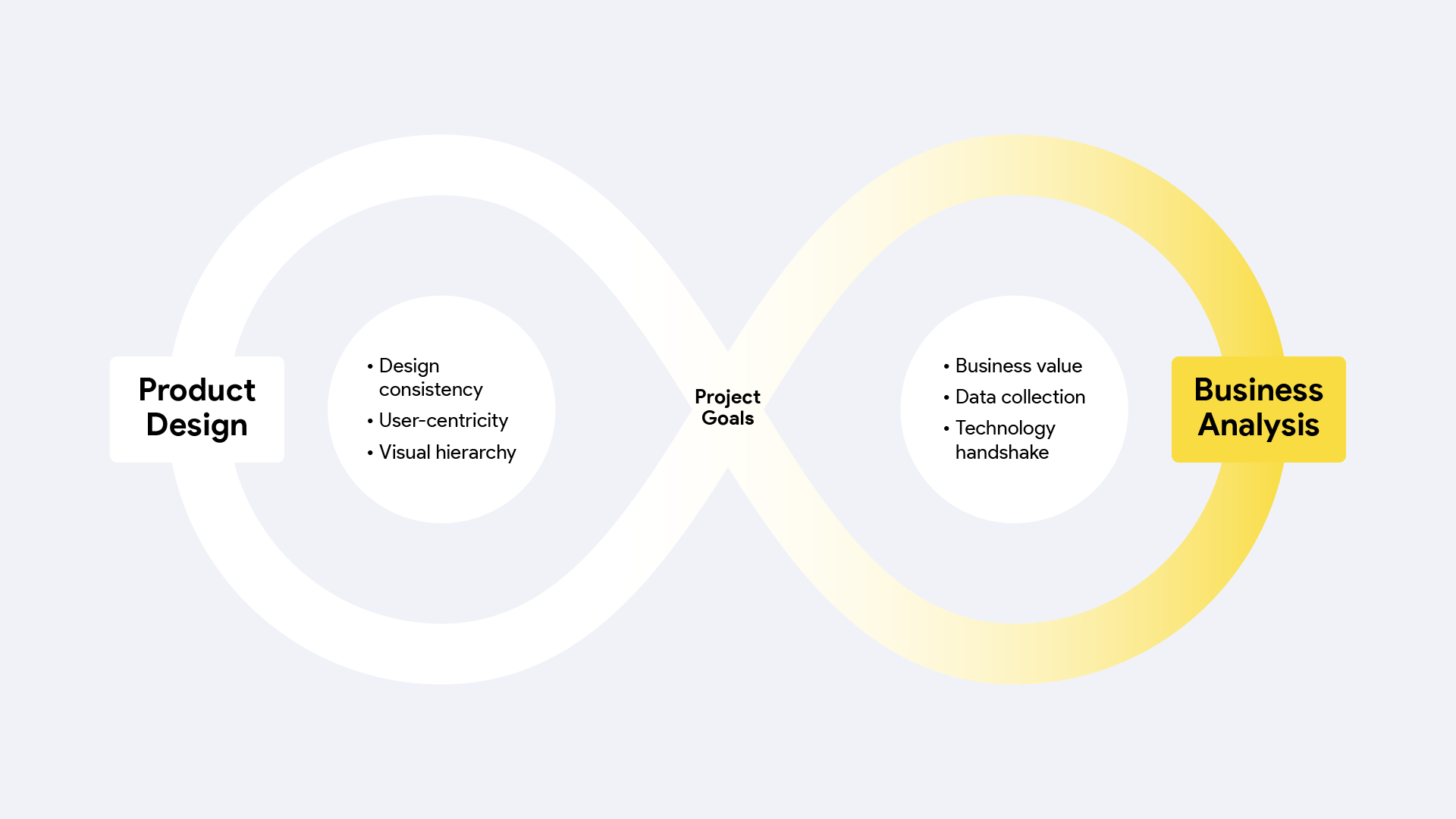
Cross-functional team
Bringing a Product Designer and a Business Analyst together in a cross-functional team is a way to get maximum effectiveness. In such units, leadership is shared, and the responsibilities of the team members are constantly evolving. This makes them more dedicated to the project and its overall objectives.
For instance, a Product Designer can easily make suggestions on the business model, while a Business Analyst can comment on the usability of a recent design solution. Every project is a living organism that goes through different lifecycle stages. So our primary focus is to analyse the current project environment and act upon it without sacrificing quality.
You might be wondering if this approach creates double work. Well, not so much. According to team performance experts, when the internal team environment supports member participation and interaction, it enhances the overall group effectiveness. Especially true, it is for cross-functional teams where the exchange of diverse cognitive resources is a common practice.
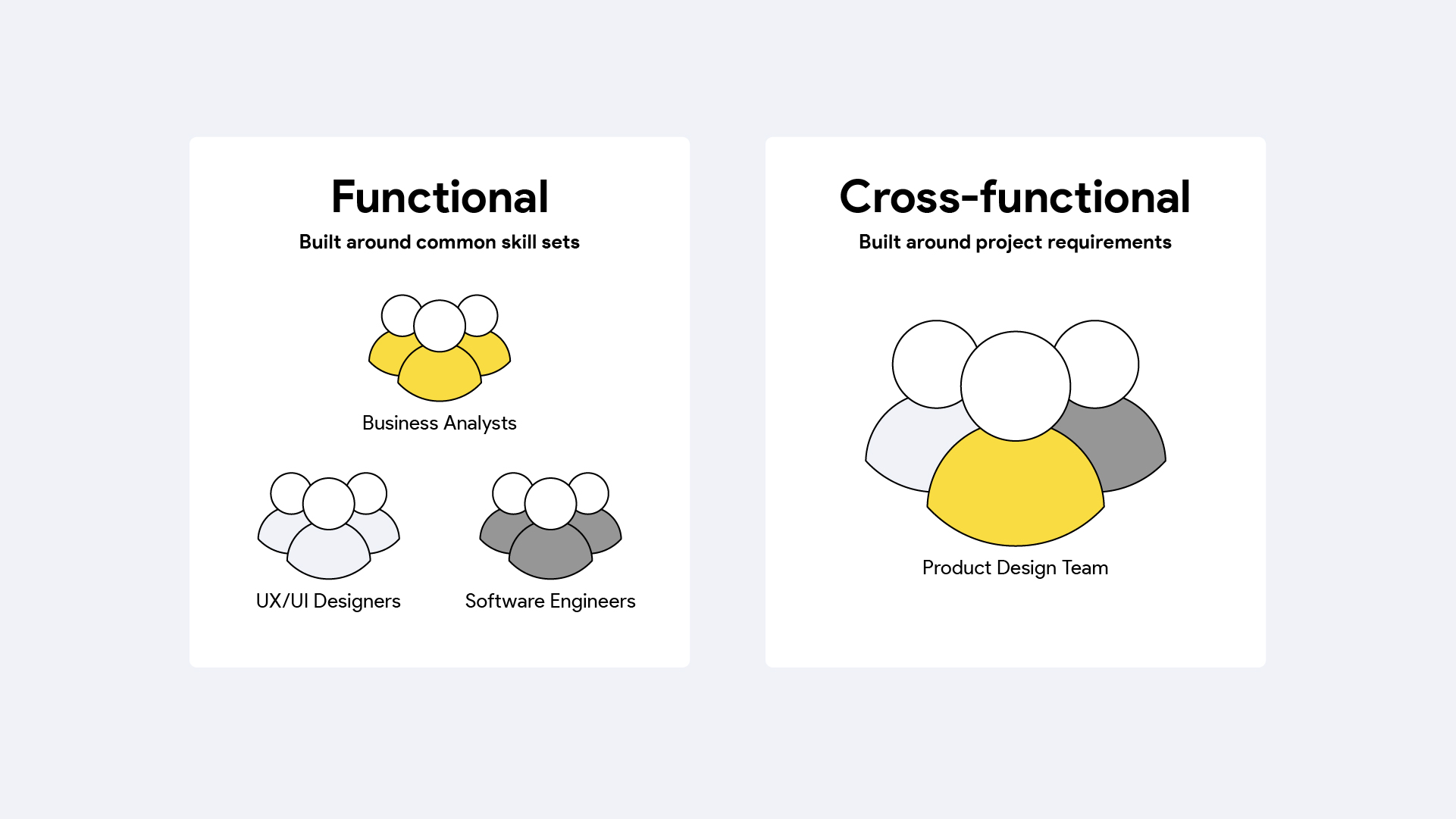
Project groundwork
Everyone is excited about the project kick-off. But it doesn’t mean one should see fit to ignore the initiation phase and the role of a Business Analyst in the project planning. Discussing project expectations early on ensures that all stakeholders are happy with the result.
The key to success lies within these essential questions:
- What are the business’s long-term goals?
- What are the project objectives?
It’s the Business Analyst who is responsible for uncovering these crucial details. Open discussion around these topics builds a shared vision of success among all team members. So, the task of a Business Analyst is to use their unique perspective to create a project roadmap and plan out project-related activities.
“Treasure hunting” phase
Every project in our studio starts with the research phase, no matter if it’s a fresh concept or an established product with a solid customer base. How does it work?
Product owners or product managers have the luxury of interacting with their target audience. They can get a feel for the market and discover user pains and gains first-hand.
When starting a project, we become real treasure hunters, with the work plan being our treasure map. At first, we can feel lost in the new surroundings, but then we make steady progress towards success step by step. We also discover some well-hidden insights along the way.
During this stage, Business Analysts typically step into a leadership role. They facilitate team workshops, elicit requirements, and make sure that all findings are documented. These activities help to form a better understanding of the market environment and target audience. Though we customize each project plan, we still build our work on some industry best practices, including: trend watching, benchmarking analysis, customer journey mapping, use case analysis, jobs-to-be-done framework.
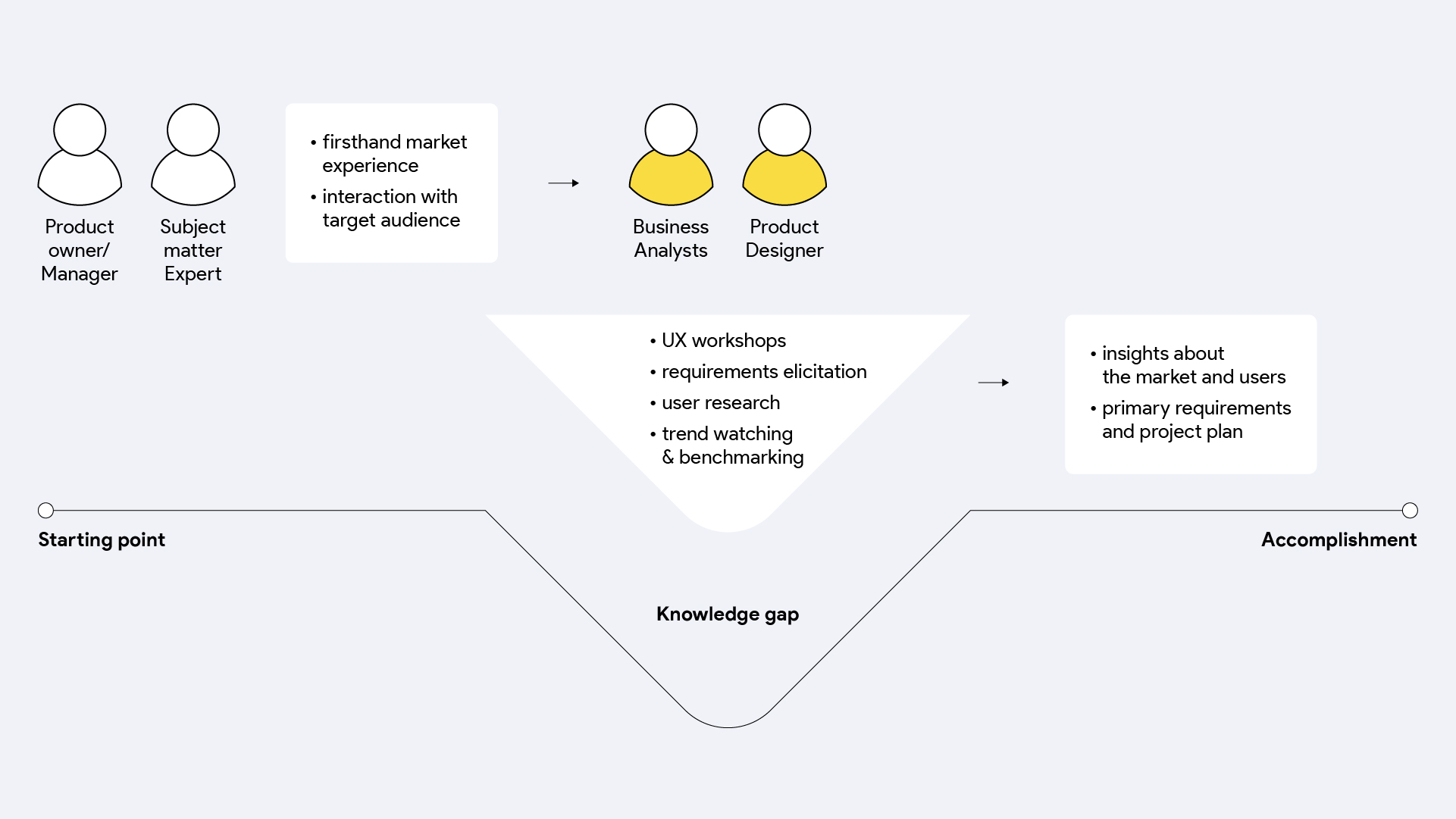
Product lifecycle explained
Now that we have a shared understanding of project requirements and product vision, the team can move on to the actual task. Here, the involvement of a Business Analyst can vary significantly, depending on a product lifecycle stage. We analyse the product maturity and effectively redistribute resources to bring maximum value.
Introduction or R&D
At this stage, we need to analyse the current behavioral patterns of the target audience and investigate how they overlap with the market offering.
First, a Business Analyst performs trend watching and conducts user research through interviews, surveys, and observations. The goal is to develop a business model and a value proposition based on use case analysis, customer journey mapping, etc. Most of the artifacts will be iterated over, so do not aim for high-fidelity deliverables.
The product ecosystem is another area that cannot be neglected in digital product design. Thinking a few steps ahead, we use information architecture, user flows, and UML diagrams to ensure the scalability of the service. Besides, we work with a technology solution:
- Investigate technical feasibility;
- Identify relationships between different entities of the system;
- Make “build vs. buy” decisions.
Growth
Finding a product-market fit takes effort, time, and resources. This process might force you to reconsider your business model or rethink your killer features.
Usually, at this point, businesses are looking for some systematic approach to managing and scaling their product. Business Analysts are destined for such tasks! Having a BA on board is essential to:
- Streamline the design process
- Establish standards of the software development lifecycle
- Coordinate inter-team communication
During this phase, we create a roadmap that captures the overall product strategy. It’s a dynamic document that requires version control.
Business Analysts are also responsible for managing problem statements and proposed solutions by ensuring that all product design decisions are feasible and valid. As the team is growing, new employees will need clear and straightforward procedures to rely on.
Maturity
You may think there are no surprises when a product reaches this phase. However, keeping it relevant and thriving is a tough task in today’s market environment. Continuous improvement is an essential pillar of a product’s long-term competitive strategy.
Only a team with a solid innovation mindset can adopt continuous improvement practices into organizational culture.
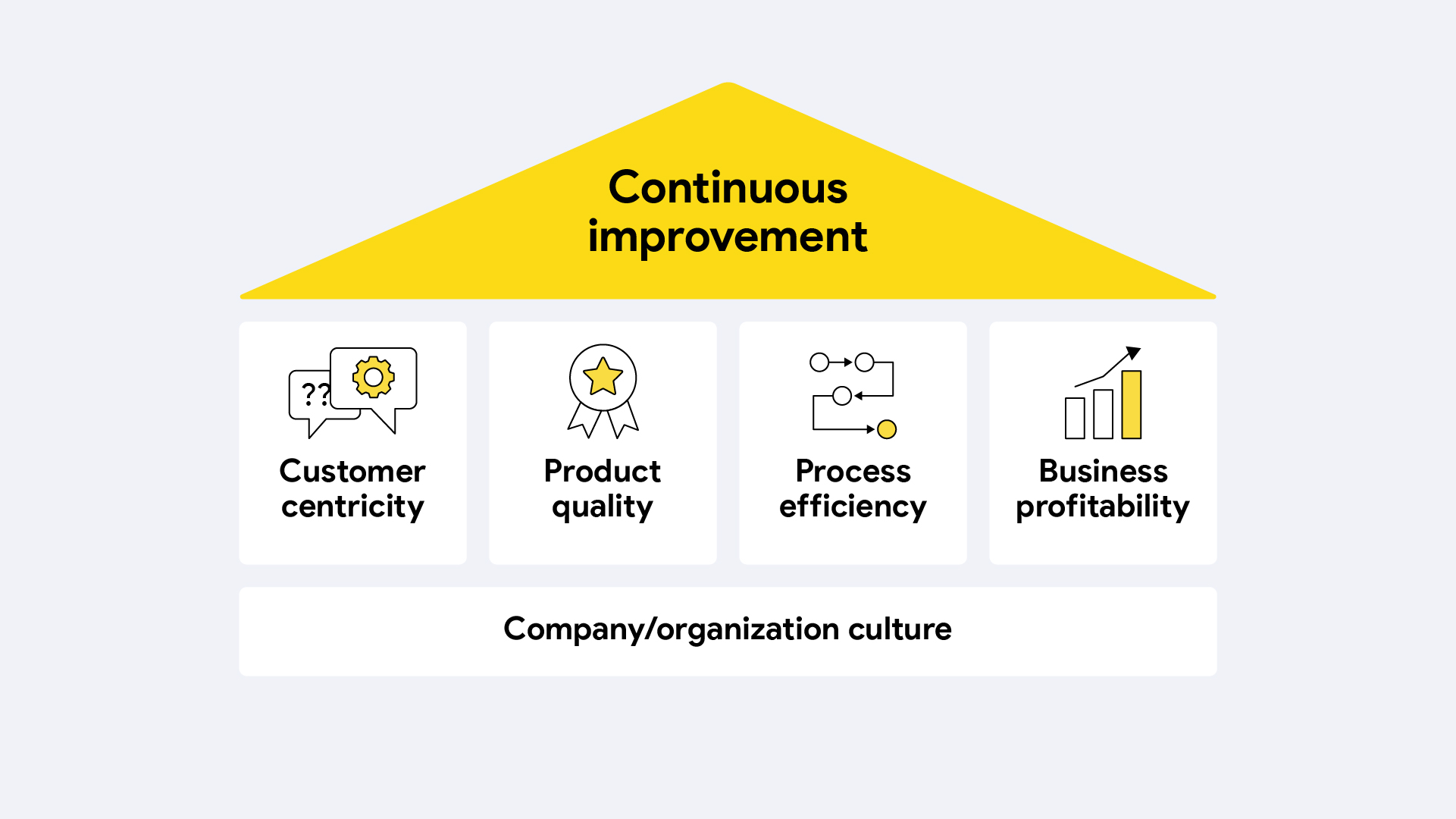
Incremental changes can be streamlined by hypothesis-driven design, which suggests a straightforward process of identifying user needs, logging your design thinking, and testing your new product solutions. In this flow, a Business Analyst can take over the following responsibilities:
- Maintain a record of product changes.
- Oversee the user testing activities (using frameworks like Hypothesis-Driven Designer Canvas)
- Measure user satisfaction by collecting qualitative and quantitative data
- Monitor product analytics tools
Decline
It’s only natural for a product to have its peaks and valleys. You might need to rethink your strategy and explore fresh ideas for adapting to new realities. The aim of this retrospective is an actionable plan for regaining market position.
Profound Business Analysis will help reduce the risks of inefficient decisions during the crisis. To resolve all the potential issues emerging at this stage, our specialists perform several activities:
- Revisit benchmarking analysis and value proposition
- Research competitors within a new domain
- Review and evaluate user flows
- Handle feedback management by analysing product metrics and conducting user interviews.
The decline phase can become a significant boost for a product, allowing a total reinvention of the business strategy.
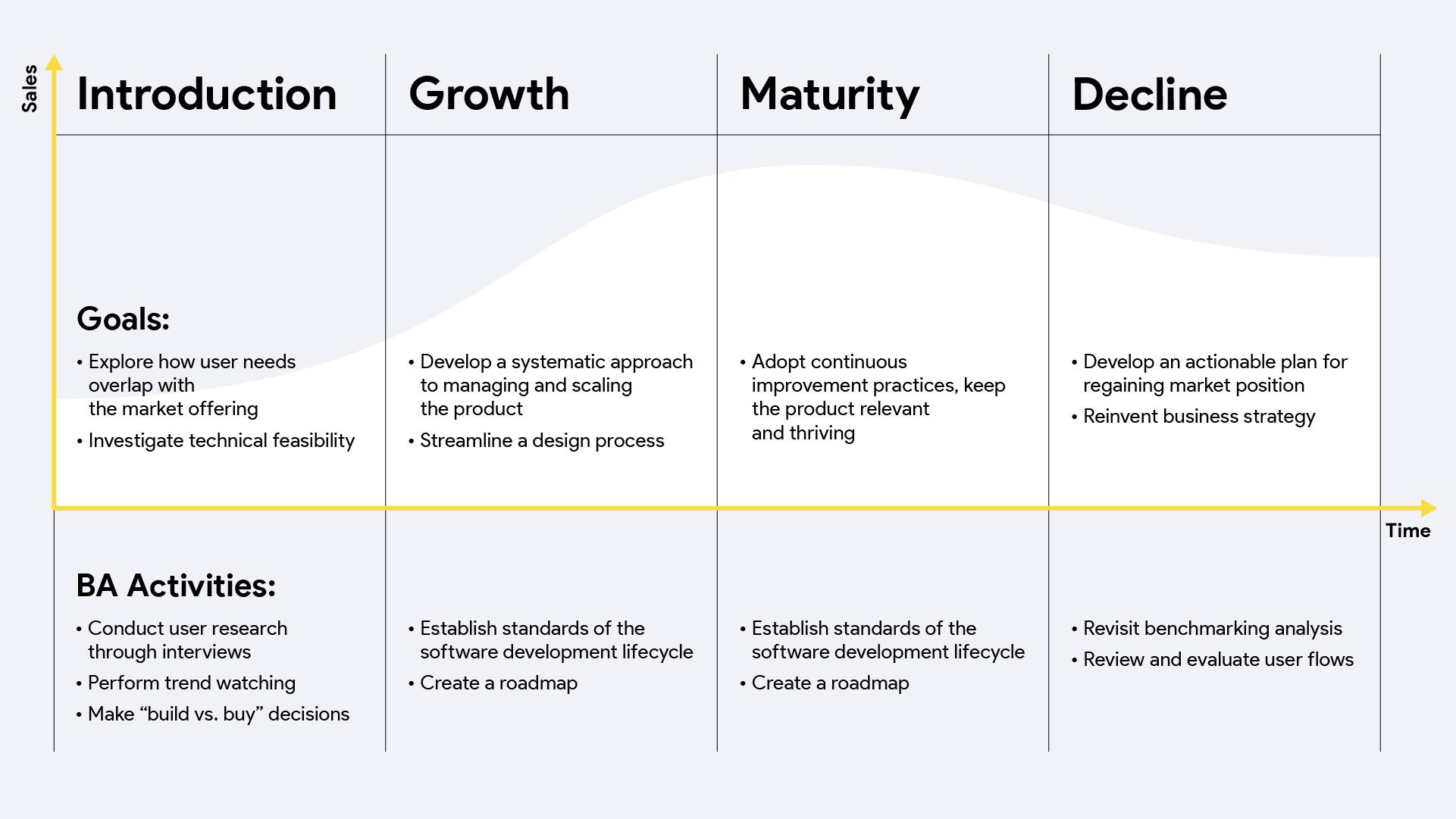
Handover to the execution phase
The development process does not end up with a mockup demonstration. A Business Analyst is a middleman between the design and development team, practically translating design mockups into technical requirements. This mediation can take up many forms, outlined below.
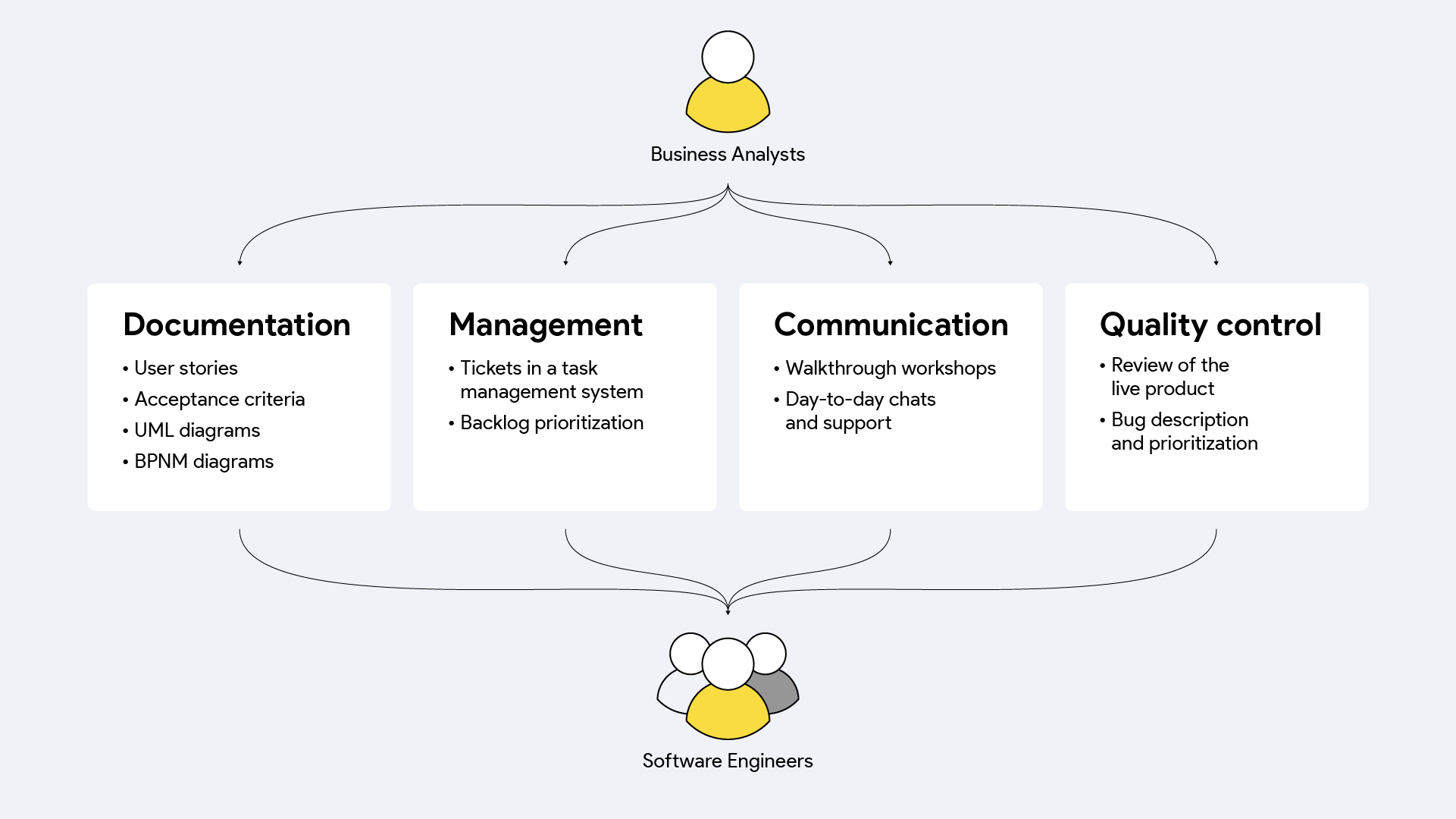
Conclusion
Before embarking on a design project, it’s better to use the “jobs-to-be-done” framework to identify what expertise would make a perfect team at a given product lifecycle stage.
Our experience has proved that one can certainly benefit from a combo of a product designer and Business Analyst in many unexpected ways. The responsibility areas are built upon the specific project requirements and the development stage, from user research activities to documentation and transfer to the execution phase.

